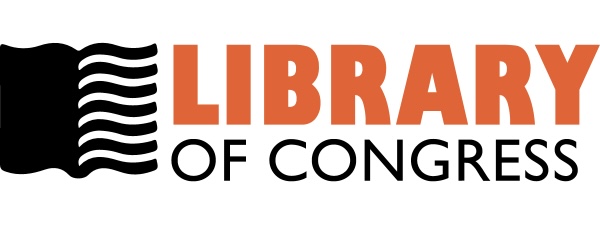العلاقة بين كمية بكتريا ال Aggregatibacter actinomycetemcomitans وتفعيل الجسيم الملتهب NLRP3 في مرضى التهاب دواعم السن المصابين بداء السكري
DOI:
https://doi.org/10.32007/jfacmedbagdad.6441972الكلمات المفتاحية:
: التهاب دواعم السن، مرض السكري من النوع الثاني، الجسيم الملتهب، بكتريا Aggregatibacter actinomycetemcomitansالملخص
الخلفية العلمية: Aggregatibacter actinomycetemcomitans هو أحد أكثر مسببات أمراض اللثة شيوعًا وله تأثير مباشر على اللثة. يعتبر مرض السكري والتهاب دواعم السن من الأمراض المزمنة التي لها علاقة ثنائية الاتجاه بينهما. وقد أظهرت الأدلة أن الجسيم الملتهب NLRP3 مهم لكلا المرضين.
هدف الدراسة: تم إجراء هذا البحث لاكتشاف العلاقة بين الحمل البكتيري للبكتيريا Aggregatibacter Actino-myctecomtans ومستوى المصل من التهاب اللثة NLRP3 في مرضى التهاب دواعم السن مع وبدون النوع 2 DM والمجموعة الضابطة.
المواد والطرق: اشتملت هذه الدراسة على 85 مشاركًا تتراوح أعمارهم بين (23-55) عامًا. تنقسم إلى ثلاث مجموعات ؛ المجموعة الضابطة ، التي كان لديها لثة صحية سريريًا وجهازًا ، والمجموعتين المصابة بالتهاب دواعم السن ، واحدة منها مصابة أيضًا بالنوع 2 DM. تم أخذ عينات من الجيوب الأربعة الأكثر شيوعًا في اللثة من أجل البلاك تحت اللثة ، ومن التلم اللثوي في المجموعة الضابطة. تم استخدام تفاعل البلمرة المتسلسل في الوقت الحقيقي في هذه التجربة. لقياس Aggregatibacter Actinomyctecomtans تم عزل الحمض النووي من عينات من لوحة الأسنان. تم جمع مصل جميع الأشخاص ، وتم قياس تركيز NLRP3 باستخدام تقنية ELISA. النتائج: أظهرت نتائج الدراسة أن العد البكتيري كان أعلى في مجموعتين من المرضى من المجموعة الضابطة ، ولكن لم تكن هناك فروق ذات دلالة إحصائية. من ناحية أخرى ، كان هناك ارتباط معنوي بين العد البكتيري والمتغيرات اللثوية في التهاب دواعم الأسنان مع مجموعة DM من النوع 2 ، بينما في مجموعة التهاب دواعم السن كان هناك ارتباط موجب مع CAL و BOP. كما لوحظ ارتباط موجب معنوي بين NLRP3 التهاب اللثة ومتغيرات دواعم الأسنان في مرضى التهاب دواعم السن مع النوع 2 DM. فيما يتعلق بمجموعة مرضى التهاب دواعم الأسنان غير المصابين بأمراض جهازية ، لم يكن هناك ارتباط معنوي بين الجسيم الملتهب والمتغيرات السريرية. أخيرًا ، هناك علاقة غير مهمة بين Aggregatibacter Actinomyctecomtans مع الجسيم الملتهب. الاستنتاجات: كان معدل اكتشاف Aggregatibacter Actinomyctecomtans أعلى بكثير في مجموعات المرضى مقارنة بالأشخاص الأصحاء ولكن غير معتد به من الناحية الإحصائية. علاوة على ذلك ، يشير عدم وجود ارتباط بين Aggregatibacter Actinomyctecomtans و NLRP3 Inflammasome إلى أن تنشيط NLRP3 يرتبط بعمليات التهابية ناتجة عن عدد من العوامل الخارجية ، بخلاف البكتيريا.
التنزيلات
المراجع
Kinane DF, Stathopoulou PG, Papapanou PN. Periodontal diseases. Nature reviews Disease pri-mers. 2017 Jun 22;3(1):1-4.
Kinane DF, Demuth DR, Gorr SU, Hajishengallis GN, Martin MH. Human variability in innate immun-ity. Periodontology 2000. 2007 Oct;45(1):14-34.
Amano A. Bacterial adhesins to host components in periodontitis. Periodontology 2000. 2010; 52:12-37.
Liang S, Krauss JL, Domon H, McIntosh ML, Ho-sur KB, Qu H, Li F, Tzekou A, Lambris JD, Hajishen-gallis G. The C5a receptor impairs IL-12–dependent clearance of Porphyromonas gingivalis and is re-quired for induction of periodontal bone loss. The Journal of immunology. 2011 Jan 15;186(2):869-77.
Hajishengallis G. Immunomicrobial pathogenesis of periodontitis: keystones, pathobionts, and host re-sponse. Trends in immunology. 2014 Jan 1;35(1):3-11.
Socransky SS, Haffajee AD, Cugini MA, Smith CK, Kent Jr RL. Microbial complexes in subgingival plaque. Journal of clinical periodontology. 1998 Feb;25(2):134-44.
Tang-Siegel G, Bumgarner R, Ruiz T, Kittichot-irat W, Chen W, Chen C. Human serum-specific acti-vation of alternative sigma factors, the stress re-sponders in Aggregatibacter actinomycetemcomi-tans. PloS one. 2016 Aug 4;11(8):e0160018.
Fives-Taylor PM, Meyer DH, Mintz KP, Brissette C. Virulence factors of Actinobacillus actinomy-cetemcomitans. Periodontology 2000. 1999 Jun 1;20:136-67.
Henderson B, Wilson M, Sharp L, Ward JM. Ac-tinobacillus actinomycetemcomitans. Journal of med-ical microbiology. 2002 Dec 1;51(12):1013-20.
Ogurtsova K, da Rocha Fernandes JD, Huang Y, Linnenkamp U, Guariguata L, Cho NH, Cavan D, Shaw JE, Makaroff LE. IDF Diabetes Atlas: Global estimates for the prevalence of diabetes for 2015 and 2040. Diabetes research and clinical practice. 2017 Jun 1;128:40-50.
McPhee SJ, Papadakis MA. Diabetes Mellitus and Hyperglycemia: Current Medical Diagnosis & Treatment. 49th Edition. 2010; 1079-1133.
Harish S, Shantaram M. A comparative and cor-relative study between blood and salivary glucose with blood HbA1c IN type 2 diabetes. Int J Pharm Sci Res. 2019 Jan 1;10(1):401-6.
AL-Azawy VS, Sh A, Al-Ghurabi BH. A compara-tive study on serum leptin and adiponectin levels in periodontitis patients with and without diabetes Mellitus Type 2. Microbiology. 2014 May;3(5):1-4.
Khanuja PK, Narula SC, Rajput R, Sharma RK, Tewari S. Association of periodontal disease with gly-cemic control in patients with type 2 diabetes in In-dian population. Frontiers of medicine. 2017 Mar;11(1):110-9.
Alasqah M, Mokeem S, Alrahlah A, Al-Hamoudi N, Abduljabbar T, Akram Z, Vohra F, Javed F. Peri-odontal parameters in prediabetes, type 2 diabetes mellitus, and non-diabetic patients. Brazilian oral re-search. 2018 Aug 6;32.
Abdul-wahab GA, Ahmed MA. Assessment of Some Salivary Enzymes Levels in Type 2 Diabetic Pa-tients with Chronic Periodontitis: Clinical and Bio-chemical Study. Journal of baghdad college of den-tistry. 2015 Mar;325(2218):1-3.
Sanz M, Ceriello A, Buysschaert M, Chapple I, Demmer RT, Graziani F, Herrera D, Jepsen S, Lione L, Madianos P, Mathur M. Scientific evidence on the links between periodontal diseases and diabetes: Consensus report and guidelines of the joint work-shop on periodontal diseases and diabetes by the In-ternational Diabetes Federation and the European Federation of Periodontology. Diabetes research and clinical practice. 2018 Mar 1;137:231-41.
Buduneli N. Hyperglycemia and periodontitis: Possible mechanisms of interaction. Oral diseases. 2018 Sep 21;25(4):925-7.
Tsai C, Hayes C, Taylor GW. Glycemic control of type 2 diabetes and severe periodontal disease in the US adult population. Community dentistry and oral epidemiology. 2002 Jun;30(3):182-92.
Serrano C, Perez C, Rodríguez M. Periodontal conditions in a group of Colombian type 2 diabetic patients with different degrees of metabolic control. Acta odontológica latinoamericana. 2012 Apr;25(1):130-7.
Awad F, Assrawi E, Jumeau C, Georgin-Lavialle S, Cobret L, Duquesnoy P, Piterboth W, Thomas L, Stankovic-Stojanovic K, Louvrier C, Giurgea I. Im-pact of human monocyte and macrophage polariza-tion on NLR expression and NLRP3 inflammasome activation. PloS one. 2017 Apr 12;12(4):e0175336.
Kelley N, Jeltema D, Duan Y, He Y. The NLRP3 inflammasome: an overview of mechanisms of activa-tion and regulation. International journal of molecu-lar sciences. 2019 Jul 6;20(13):3328.
Lv K, Wang G, Shen C, Zhang X, Yao H. Role and mechanism of the nod-like receptor family pyrin do-main-containing 3 inflammasome in oral disease. Ar-chives of Oral Biology. 2019 Jan 1;97:1-1.
Lang, N. P. (1999). International classification workshop. Consensus report: Aggressive periodonti-tis. Ann Periodontol, 4, 53.
Borges MA, Figueiredo LC, Brito Jr RB, Faveri M, Feres M. Microbiological composition associated with vitamin D receptor gene polymorphism in chronic periodontitis. Brazilian Oral Research. 2009;23:203-8.
Byrne SJ, Dashper SG, Darby IB, Adams GG, Hoffmann B, Reynolds EC. Progression of chronic periodontitis can be predicted by the levels of Por-phyromonas gingivalis and Treponema denticola in subgingival plaque. Oral microbiology and immunol-ogy. 2009 Dec;24(6):469-77.
Charalampakis G, Dahlén G, Carlén A, Leon-hardt Å. Bacterial markers vs. clinical markers to predict progression of chronic periodontitis: A 2‐yr prospective observational study. European journal of oral sciences. 2013 Oct;121(5):394-402.
Tomás I, Regueira-Iglesias A, López M, Arias-Bu-janda N, Novoa L, Balsa-Castro C, Tomás M. Quan-tification by qPCR of pathobionts in chronic perio-dontitis: development of predictive models of disease severity at site-specific level. Frontiers in microbiol-ogy. 2017 Aug 9;8:1443.
Castrillon CA, Hincapie JP, Yepes FL, Roldan N, Moreno SM, Contreras A, Botero JE. Occurrence of red complex microorganisms and A ggregatibacter actinomycetemcomitans in patients with diabetes. Journal of investigative and clinical dentistry. 2015 Feb;6(1):25-31.
Sánchez GA, Acquier AB, De Couto A, Busch L, Mendez CF. Association between Aggregatibacter actinomycetemcomitans and Porphyromonas gingi-valis in subgingival plaque and clinical parameters, in Argentine patients with aggressive periodontitis. Microbial pathogenesis. 2015 May 1;82:31-6.
Tomita S, Komiya-Ito A, Imamura K, Kita D, Ota K, Takayama S, Makino-Oi A, Kinumatsu T, Ota M, Saito A. Prevalence of Aggregatibacter actinomy-cetemcomitans, Porphyromonas gingivalis and Tan-nerella forsythia in Japanese patients with general-ized chronic and aggressive periodontitis. Microbial pathogenesis. 2013 Aug 1;61:11-5.
Gholizadeh P, Pormohammad A, Eslami H, Sho-kouhi B, Fakhrzadeh V, Kafil HS. Oral pathogenesis of Aggregatibacter actinomycetemcomitans. Micro-bial pathogenesis. 2017 Dec 1;113:303-11.
Kim Y, Wang W, Okla M, Kang I, Moreau R, Chung S. Suppression of NLRP3 inflammasome by γ-tocotrienol ameliorates type 2 diabetes. Journal of li-pid research. 2016 Jan 1;57(1):66-76.
García‐Hernández AL, Muñoz‐Saavedra ÁE, González‐Alva P, Moreno‐Fierros L, Llamosas‐Her-nández FE, Cifuentes‐Mendiola SE, Rubio‐Infante N. Upregulation of proteins of the NLRP3 inflam-masome in patients with periodontitis and uncon-trolled type 2 diabetes. Oral Diseases. 2019 Mar;25(2):596-608.
Higuchi K, Ziauddin SM, Yamashita Y, Ozaki Y, Yoshimura A. Initial periodontal treatment affects nu-cleotide-binding domain leucine-rich repeat-contain-ing protein 3 inflammasome priming in peripheral blood mononuclear cells. Archives of Oral Biology. 2020 Feb 1;110:104625.
Aral K, Berdeli E, Cooper PR, Milward MR, Ka-pila Y, Karadede Ünal B, Aral CA, Berdeli A. Differ-ential expression of inflammasome regulatory tran-scripts in periodontal disease. Journal of Periodon-tology. 2020 May;91(5):606-16.
Shahbeik S, Taleghani F, Sattari M, Mohammadi MM, Moravej M. Evaluation of NLRP3 and IL-18 Levels after Periodontal Therapy NLRP3 and IL-18 Levels after Periodontal Therapy. Iranian Journal of Allergy, Asthma and Immunology. 2021;20(6):764.
Surlin P, Lazar L, Sincar C, Gheorghe DN, Popescu DM, Boldeanu VM, Pitru A, Florescu C, Rogoveanu I. NLRP3 Inflammasome Expression in Gingival Crevicular Fluid of Patients with Periodon-titis and Chronic Hepatitis C. Mediators of Inflamma-tion. 2021 Nov 19;2021.
Lamont RJ, Hajishengallis G. Polymicrobial syn-ergy and dysbiosis in inflammatory disease. Trends in molecular medicine. 2015 Mar 1;21(3):172-83.
Lamont RJ, Koo H, Hajishengallis G. The oral mi-crobiota: dynamic communities and host interac-tions. Nature reviews microbiology. 2018 Dec;16(12):745-59.
Yilmaz Ö, Sater AA, Yao L, Koutouzis T, Petten-gill M, Ojcius DM. ATP‐dependent activation of an inflammasome in primary gingival epithelial cells in-fected by Porphyromonas gingivalis. Cellular micro-biology. 2010 Feb;12(2):188-98.
التنزيلات
منشور
إصدار
القسم
الرخصة
الحقوق الفكرية (c) 2022 mohammed al-obaidi

هذا العمل مرخص بموجب Creative Commons Attribution-NonCommercial 4.0 International License.




















 Creative Commons Attribution 4.0 International license..
Creative Commons Attribution 4.0 International license..


